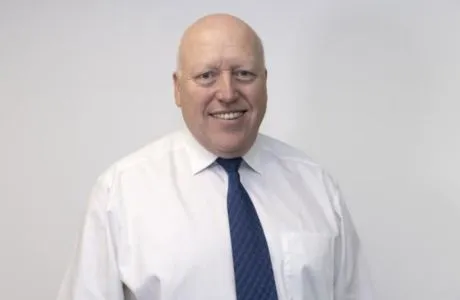
Happy New Year!
Let’s face it, 2020 set the bar pretty low so if 2021 isn’t happier than last year, we’re in trouble. Also, I think there’s genuine reason to be positive about the next 12 months and beyond, especially when looking at the seconds market.
It was great to hear Matt Tristram of Loans Warehouse confidently predicting in December that seconds volumes in Q1 of 2021 would be back to pre-pandemic levels. He was right on the money when he said volumes in Q4 of last year would be double Q3, so he’s got some form as a market pundit.
Last summer was challenging to say the least for lenders and brokers with FLA figures showing that new seconds business in May was down 80 per cent from February.
Some lenders naturally fared better than others though, and with the historic market leader dropping away for a few months, opportunities were presented for growth from others, just look at the March Oplo has made in 2020.
We were fortunate at UTB that we went into the first lockdown very well prepared, and our brokers were very thankful as a result. Of course, we hadn’t seen Covid coming but we had seen how employing FinTech in appropriate stages of an application could make the process quicker, more efficient and easier for the customer and the broker. Turns out that much of what the Bank invested to improve our broker and customer journeys and make our IT infrastructure more resilient was crucial in enabling us to continue operating with up to 90 per cent of our staff working remotely. With lawyers closed and valuers also hamstrung by social distancing and travel restrictions, digital ID verification and AVMs were frequently the only way for lenders to keep cases on track. It’s no surprise that most lenders and brokers are putting smart technology and further digitisation of their businesses high on their priority lists for this year. We work closely with tech gurus like Nivo and Optalitix and I hear their new customer enquiries have rocketed in the last six months.
Whilst businesses will be very keen to future proof themselves from other events like Covid-19. I’m convinced the investment will be well rewarded even if we don’t see another ‘Black Swan’ for many years. Quicker turnarounds, higher conversions and improved efficiencies are all possible with carefully applied digital solutions. We all understand how important speed is in the Seconds market and things have got a lot better. But for Joe Public, it’s still often perceived as a slow and complicated process. Clayton Shipton of CLS Money was right when he recently said that services like Amazon and Uber had raised consumer expectations of speed and ease in all of their transactions.
Compared to some other forms of consumer credit that isn’t a regulated mortgage under MCoB, arranging a second charge loan can feel like it takes forever. Take motor finance. You go to a car dealer,you see the car you want and after half an hour with the salesman the finance is agreed and you’re driving away in your new motor. OK, so arranging a chunky second charge loan secured on your house should be something which more care and attention than buying a Ford Fiesta, but once the options have been clearly explained and understood by the borrower and the lender has completed their thorough affordability and security checks, why hang about? FinTech and fresh thinking on improving processes will help to close that gap. In an ideal world the funds will be ready to draw as soon as the customer wants them, and any regulatory requirements designed to ensure they have received best advice and understand the consequences of their choices have been met. You can’t tell me conversions won’t improve considerably if the time from application to pay out is just three to four days instead of 15. Impossible? We’ll see.
We need to keep innovating in the seconds sector if we want the market to reach its true potential. Even leaving Covid aside, market growth has flatlined in the last two years. We get excited when the FLA figures show new business passing £100m a month (or £1.2bn annually) but that’s still a tiny fraction of the £280bn a year first charge market. The other issue we must address is awareness and proper understanding of second charges and how easy it is for brokers to dismiss them when advising clients. Over the years we at UTB, and others such as Precise and Shawbrook, have worked hard to increase product awareness, but there is still a long way to go. Its great to see the recent social media push from Optimum Credit for example.
What really is quite staggering is that someone can be a mortgage adviser but opt out of giving any consideration to second charges (or on the flipside advising only on seconds) even though there will be clear instances when a second charge would be more appropriate than a remortgage or further advance. Imagine the same scenario applied to protection advice. “I can talk to you about term life assurance but not income protection or critical illness cover. Shall we get started?” Hmmm. The second charge market is tiny compared to the remortgage market, but it’s still a useful – some would say essential – product to have in a mortgage professional’s tool kit. Restricting customer choice from the outset doesn’t feel like a fair and consumer centric market to me.
Buster Tolfree is commercial director – mortgages at United Trust Bank


